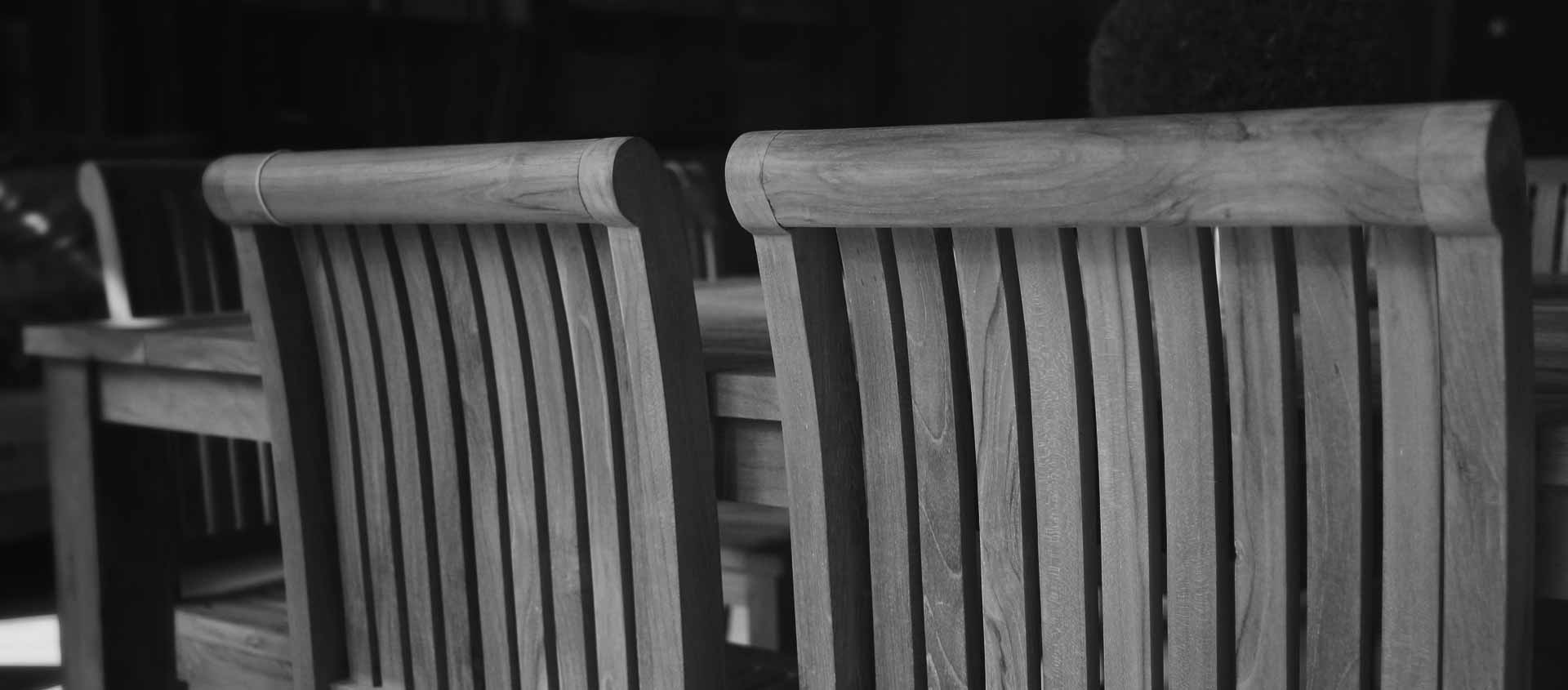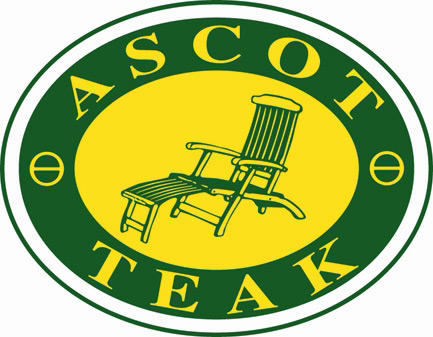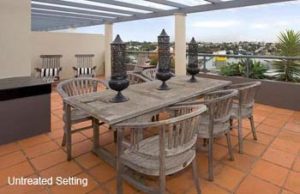
Teak Care
The following Teak Care Guide is a summary of information compiled from questions that have been asked by our customers.
If you have any further questions please feel free to email us.
What kind of wood is Teak?
Teak is a very hard wood grown in Southeast Asia. The teak that Ascot uses is plantation grown, rather than taken from the existing rainforests. This fine-grained hardwood contains both soft and hard grain and its legendary durability make it ideal for outdoor use. These characteristics and its beautiful timeless appearance has earned teak the name ‘THE KING OF TIMBERS’. Hence, Lord Monterey´s quote from 1892 reinforces this: “Among timber teak holds the place which the diamond maintains with precious stones and gold among metals.” Because of teak’s durability and striking appearance it is extensively used in the marine industry. The natural oils present in teak are found to make it more water-resistant. In a harsh marine environment, however, some maintenance is required to keep the original beauty and colour of the teak.
What happens if I leave my teak untreated?
If you leave your Ascot Teak furniture untreated (meaning applying no protective finish) and exposed to exterior conditions, a weathering process occurs. The natural oil in the teak will often dissipate causing the teak to take on a light grey or silver appearance. A protective product ideal for teak is Ascot´s specially formulated first-grade teak oil. It may be used to arrest the weathering process and enhance the beauty of the teak. However, for those teak owners who like the silver-grey appearance of the teak no oiling is necessary and very little maintenance is required. All that is required is an annual scrub with soapy water to remove any accumulated dirt.
What are those dark brown spots on my teak?
The dark brown spots visible on the teak are old oxidized oil.
Should I be concerned about the appearance of small surface cracks?
This is a characteristic of all timbers and will not affect the strength or durability of your furniture. These small cracks are the natural effects of changes in the seasons and the wood absorbing or releasing atmospheric moisture.
How can I remove this oxidized material and old finish?
It is advantageous to know what was used on your teak before. However, a light sanding will be needed if your teak has been finished with drying oils, resins and varnishes. Many oils can be removed with a good one-part teak cleaner. It would be advisable to give your teak piece a final cleaning with a good teak cleaner before applying any other protective product. Special solvents are required when silicone oils have been used. All silicone must be removed before any other finishes can be applied.
Why is cleaning the teak so important?
Very often people are so anxious to apply products to their teak to enhance the beauty of their timber that they rush through the cleaning process. This can often shorten the life of you protective coating as well as allow it to penetrate unevenly. Clean teak will allow even penetration and good bonding with any type of protective coating you choose to use.
What kinds of protective coatings are available on the market?
There are various types of protective coatings on the market.
Solvent-based oils:
These are the most widely used treatments. They usually contain mineral spirits, tung oil, turpentines or various other organic oils. Some of these oils last from a few weeks to a season, especially those oils containing tints, which act as UV inhibitors. This type of product is the preferred and recommended by ASCOT TEAK. It involves less time and effort in applying and reapplying such a finish as compared to some of the other products listed here. Ascot Teak has it’s own branded first grade wiping oil that has been especially formulated for teak furniture.
Silicone:
Contain silicone, which is like non-drying oil. This is not recommended, as where silicone appears, no other coating will adhere.
Varnish coatings:
These mostly contain resins and/or urethane’s. It will normally last a season but will need to be stripped, sanded and re-coated each time.
Acrylic polymers:
These are water-based coating with UV inhibitors. They will last up to a year but will also require stripping and re-coating.
What do I need to look for in a protective coating?
A product, which bonds well, however does not damage the teak. It must protect he teak from UV rays, be durable, be removable and maintain the appearance you want in your teak. We strongly recommend that you do not use any product containing linseed oil, as linseed oil reacts with water to cause the furniture to develop black blotches.
What factors can affect how long my protective product will last?
Cleaning: If your teak is properly cleaned, your protective product will last longer and bond better.
The Environment: Elements such as heat, salt water and UV rays can shorten the life span of your teak care product. The worst being the UV rays.
Location and position: Teak furniture that is on a swimming pool platform, being subject to heavy ware or fully exposed to the weather will require more application of a protective maintenance coatings more often to retain it’s honey appearance. Horizontal parts of your furniture are more prone more to UV damage than vertical parts.
How to take care of your teak.
There is no “maintenance free” ways to care for your teak if you would like to keep its honey colored appearance. Consider the look you would like and the amount of effort you are willing to make. Email us any questions you may have and then make you own decision as to what products are best to clean and protect your beautiful teak.
Firstly make sure you inspect your teak and take note of the condition of it. An inspection of the surface of the teak will assist in determining what products have been used on the teak in the past and what is needed to bring it back to its beautiful appearance and give the appropriate protection. —
Attempt to find out what sort of product has been used on the teak so you will know how to best clean the teak in preparation for applying a protective coating.
Cleaning is the most critical step in caring for you teak. Clean teak will allow even penetration and better coverage and bonding with the protective coating of your choice. After you have identified what was used on the teak in the past, you can progress to cleaning it. You can clean your teak even if you don´t know what has been used previously, but it´ &s always best to find what was originally used.
Cleaning requires that you remove oxidation, environmental dirt, previously used products, mold or mildew. We do not recommend the use of two-part ‘strip’ cleaners.
Even though these cleaners have given teak a new look they also have many undesired are negative results like:
>> Damage to glecoat and brightwork of the fittings
>> Burning of your skin
>> Removal of soft grain in the timber
>> Altering the natural oils in the teak.

